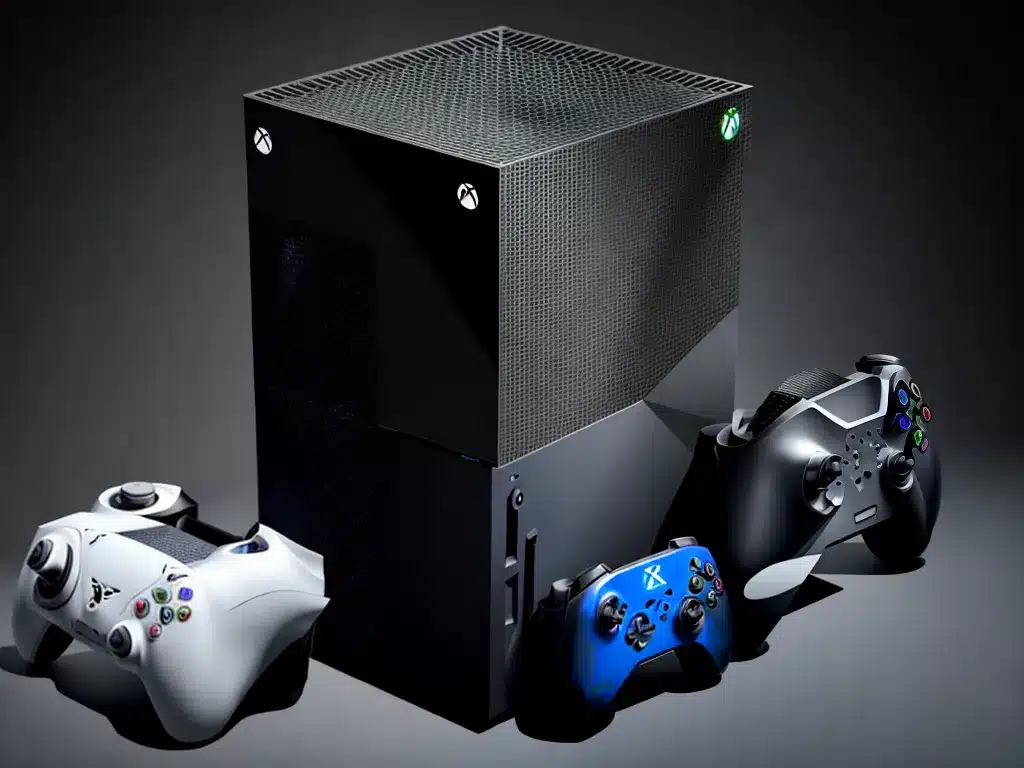
Introduction
The PlayStation 5 and Xbox Series X consoles feature custom system-on-a-chip (SoC) designs from AMD that enable unprecedented graphics performance and new capabilities. As a gamer, I’m excited to dive deep into the technical details of these new AMD SoCs to understand how they deliver truly next-generation gameplay.
AMD Chips in PS5 and Xbox Series X
Both Sony and Microsoft worked closely with AMD to create unique SoC designs for their new consoles. While these chips share some common AMD technology, they are customized with different configurations.
PlayStation 5 SoC
The PS5 utilizes a custom AMD SoC codenamed “Oberon” along with a customized RDNA 2 GPU. Key components include:
- 8-core AMD Zen 2 CPU clocked at 3.5GHz
- Custom RDNA 2 GPU with 36 compute units at 2.23GHz
- 16GB of GDDR6 memory with 256-bit bus
- Custom I/O unit and SSD controller
Xbox Series X SoC
The Xbox Series X also uses a custom AMD SoC with the following core components:
- 8-core AMD Zen 2 CPU running at 3.8GHz
- Custom RDNA 2 GPU with 52 compute units at 1.825GHz
- 16GB of GDDR6 memory with 320-bit bus
- Custom I/O and storage architecture
The Xbox Series X GPU has more compute units for higher theoretical peak performance. However, the PS5 runs at a higher clock speed.
Achieving Next-Gen Graphics
The custom AMD GPUs in both new consoles support hardware-accelerated ray tracing along with variable rate shading and other advanced features. Here’s how these capabilities enable true next-generation graphics.
Ray Tracing
Ray tracing simulates the physical behavior of light to render incredibly realistic lighting, reflections, and shadows in real-time. This results in much more visually immersive environments.
The RDNA 2 GPUs in the PS5 and Xbox Series X have dedicated ray tracing acceleration engines with enhanced compute units optimized for ray tracing workloads. This hardware-level support enables playable framerates with ray traced effects.
Variable Rate Shading
Variable rate shading (VRS) selectively reduces the shading rate in areas of the image that don’t require full resolution. This improves performance with minimal visual impact.
The RDNA 2 GPUs support VRS tiering so the shading rate can be lowered selectively based on content, camera position, motion, and other factors.
Mesh Shaders
Mesh shaders are a new programmable stage in the graphics pipeline that allow more objects to be rendered on-screen simultaneously. This enables richer game worlds and new effects.
Both the PS5 and Xbox Series X GPUs support mesh shading, although Microsoft has emphasized it more for the Xbox Series X. Mesh shading can optimize and cull objects faster while also reducing CPU load.
Machine Learning Acceleration
AMD RDNA 2 adds dedicated machine learning hardware accelerators to enable techniques like “super resolution,” which uses AI training to upscale lower resolutions to high-fidelity 4K with minimal artifacts.
The PS5 and Xbox Series X can leverage machine learning to improve gaming visuals and unlock new computer vision capabilities in areas like AI-enhanced NPCs.
Optimized Gaming Architecture
The new AMD SoCs deliver their breakthrough graphics capabilities through careful system design that optimizes data flow and reduces bottlenecks.
Custom I/O Solutions
Both consoles feature custom I/O units and super fast SSDs to load assets directly from storage into the GPU almost instantly. This enables large, detailed worlds to stream smoothly during gameplay.
The PS5 utilizes a custom flash controller and Xbox Series X leverages Microsoft’s Velocity Architecture – but both achieve similar results. Their super fast SSDs with highly optimized I/O eliminate loading time lags.
Unified Memory
Sharing a unified memory pool between the CPU and GPU allows efficient data transfer. The GDDR6 memory in both consoles is optimized for peak bandwidth to feed the graphics processors.
Unified memory architectures eliminate redundant copies of data while also allowing developers to design flexible memory allocation schemes.
3D Spatial Audio
The Tempest 3D AudioTech engine in the PS5 and Dolby Atmos support on Xbox Series X enable highly immersive spatial sound in games. Along with ray traced audio, this creates lifelike acoustics.
3D audio adds a sense of presence and space while also allowing players to pinpoint sounds precisely. It completes the sensory experience.
Conclusion
The specialized AMD SoCs give the PS5 and Xbox Series X immense graphics power. Ray tracing, variable rate shading, mesh shaders and machine learning acceleration only scratch the surface of what these new RDNA 2 GPUs make possible. Paired with fast SSDs and unified memory, the new consoles truly realize the next generation of gaming. As a gamer, I’m thrilled to experience what game developers can do with these technical marvels! The future of real-time graphics is bright.












